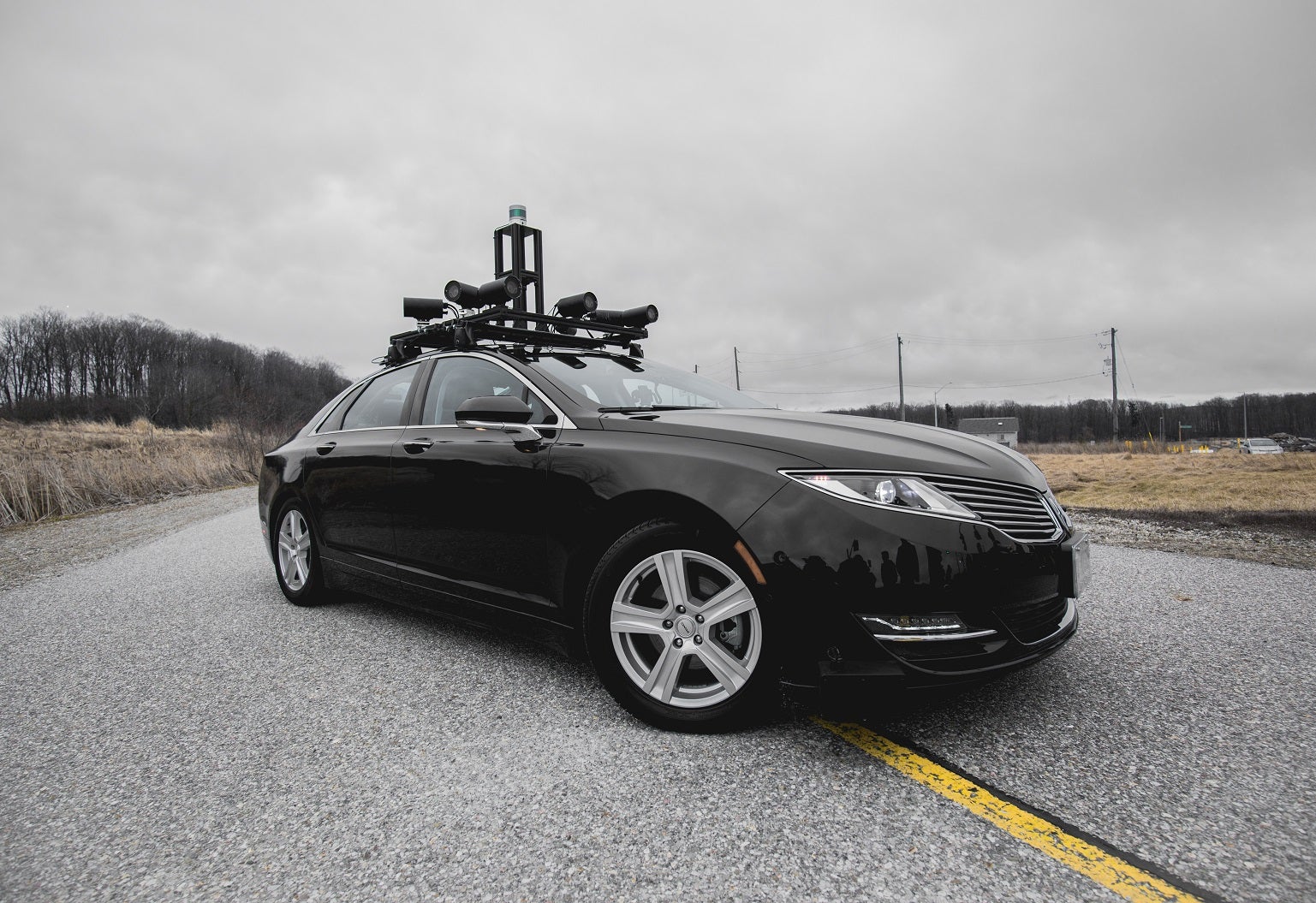Researchers at the University of Waterloo have reached an important milestone by logging their 100th kilometre on public roads in a self-driving car.
Achieved last week in an industrial area of Waterloo, it is the culmination of almost two years of work since the research team won approval from the Ontario government to do on-road testing in an autonomous vehicle pilot program.

Autonomoose shows off its hardware this spring at the test track where much of the work on Waterloo's ambitious autonomous vehicle project has taken place.
“We’re pulling this off and 100 kilometres is symbolic of that,” said Krzysztof Czarnecki, co-lead of more than 60 professors, engineers, researchers and graduate students working on the project. “It’s a number you can’t reach without having a robust system.”
Nicknamed the Autonomoose, the modified Lincoln MKZ hybrid sedan at the heart of the initiative is equipped with nine cameras, LiDAR and radar scanners, and other sensory devices that gather data for processing by sophisticated on-board computer software.
The car travels in autonomous mode on public roads at a top speed of 35 km/h, negotiating intersections and light traffic for up to two kilometres at a time without intervention by a driver always seated behind the wheel.
“This is an important stepping stone,” said Danson Garcia, the lead hardware researcher. “We can definitely see this is doable and that our research is moving forward.”
Next steps include reducing the number of human interventions, or takeovers, improving perception of other vehicles and pedestrians, and refining the artificial intelligence required for the car’s autonomy software to make complex decisions and manoeuvers on its own.
'Everything takes longer than anticipated'
The project, the most advanced university-based program of its kind in Canada, also involves research into the unique challenges of autonomous driving in winter weather.
A longer-term goal involves developing the high-definition 3D maps and capabilities required for Autonomoose to drive itself to campus through signaled intersections in all kinds of traffic from a test track several kilometres away.
Despite their progress to date, one of the key lessons learned by researchers is how incredibly challenging autonomous driving is due to the sheer number of variables and possibilities in play.
“We always have to plan for unexpected issues,” said Czarnecki, a professor of electrical and computer engineering. “Everything takes longer than anticipated.
“There is still a lot of tuning needed and development to follow up on, but for us this is a huge achievement. When we did our first road test, the system was really just a fundamental subset of what we have now.”